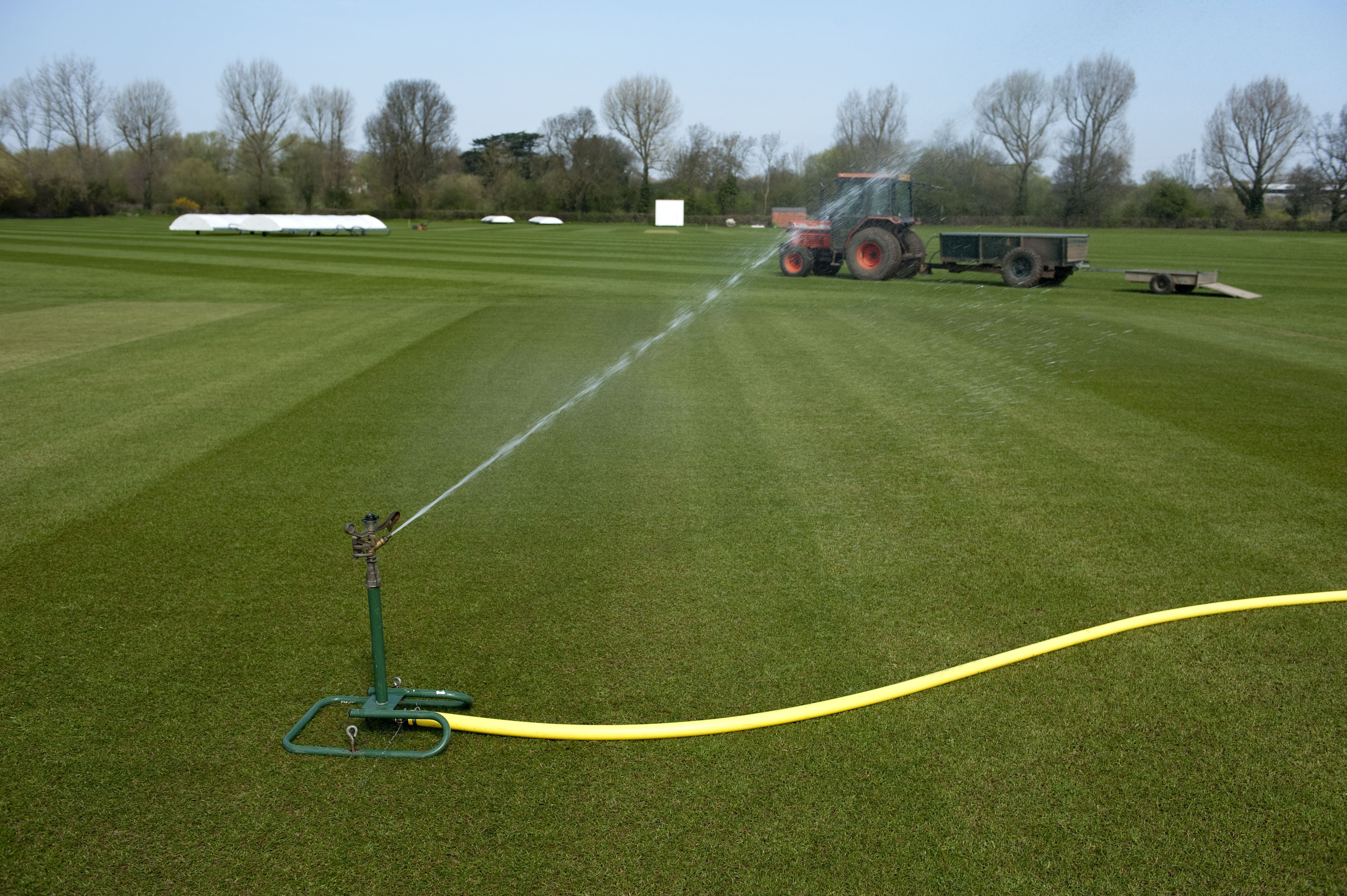Is irrigating the outfield necessary?
Most outfields are not irrigated in cricket in the UK. This is because:
- The infrastructure to irrigate such a large area costs a lot of money.
- A large quantity of water is required which adds to cost.
- The majority of outfields can survive with the rain that falls during summer months.
However, some clubs irrigate their outfields because conditions are too dry to maintain healthy grass conditions or safe soil conditions (particularly where outfields are also used for winter sports). Having an irrigation system can increase the effectiveness of pre-cricket-season renovations of outfields following winter sport.
Cricket outfields have traditionally droughted during dry periods with the view that they appear to recover once it starts to rain. However this can cause problems in very dry periods because different grass species (and weeds) have different drought tolerances. Annual meadow grass (Poa annua) has poor drought tolerance and will die back permanently. This is an undesirable weed grass, so this might appear positive but only if the dead annual meadow grass is removed and over-sown with new desirable grass species such as perennial ryegrass (Lolium perenne).
What equipment is used?
Hand watering outfields is rarely viable due to the area that needs to be covered. Smaller areas of outfields such as repair areas (e.g. goal mouths) or drought areas near trees can be irrigated using static hand-moved sprinklers but the majority of irrigated outfields are irrigated using an automatic ‘pop-up’ sprinkler system, or occasionally travelling irrigators (for more information on these two techniques see the Irrigating Squares page.
Because of the large cost of irrigating outfields it is important to get good design advice, an underspecified irrigation system can cause more problems than it solves.
Water conservation
We all have a responsibility to conserve mains water – this is to help protect the environment and to avoid wasting valuable drinking water which is under increasing supply stress in many parts of the UK.
Given the large quantities of water required, the increasing price of mains potable water and the potential for restrictions during dry periods, it is particularly beneficial to consider alternative water supplies when it comes to irrigating outfields. This could include groundwater (borehole) or surface water (lakes and ponds) abstraction or rainwater harvesting from buildings. Note that any more than 20 m³ /day of water abstraction from groundwater and some surface water resources is likely to require a licence from the Environment Agency. The Environment Agency will only grant these licences where there is sufficient water availability so always do your homework and speak to specialists before abstracting from these types of watercourse.
There are many ways to reduce water consumption in irrigation but the main ones are:
- Only water when you need to – the grasses used in cricket outfields can take a lot of stress before they need to be watered.
- Only water where you need to – don’t waste water in areas you don’t need to irrigate
- Do not water in the heat of the day or when it’s windy – water will evaporate before it can infiltrate into the soil and it is not very effective. It is best to water at night, if you cannot do that because you do not have an automatic or travelling irrigation system then water in the evening, or if you have to -- early in the morning.
- Do not apply water so quickly that it does not infiltrate and runs off the target area. This is particularly important on sloping areas.
- Fix leaks and defective equipment.
Watering newly constructed outfields
New outfield constructions or new outfield swards will require water to germinate grass seed and sustain new grass growth whilst it establishes a deep root network. Timing grass seeding to autumn means that the likelihood of rain will increase compared to the middle of the season. This will significantly reduce the need for irrigation, but you should have a contingency irrigation plan in place if you are doing outfield reconstruction/reseeding projects. Hopefully, you will not need to use it but not being able to access irrigation might make a delayed start to the reopening of your cricket ground.


 Tweet
Tweet